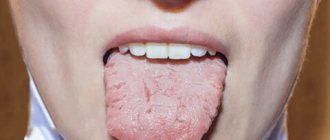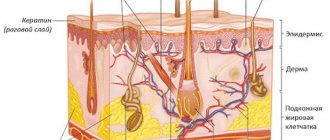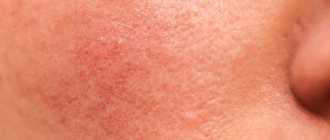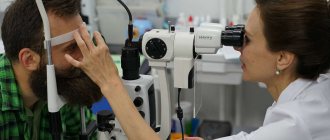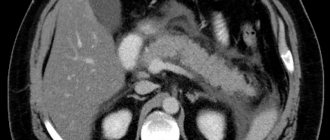Dysgeusia (distortion of taste) is a disease in which the sense of taste is partially or completely absent. There are many reasons for this disease. Using the sense of taste, we can determine the taste of food and other elements entering the body. The sense organs that are responsible for this function are called taste buds.
They are located on the surface of the tongue. Under some conditions, a person may lose the ability to taste foods. Experts distinguish four main types of such disorders, namely pargeusia, dysgeusia, ageusia or hypogeusia. The complete absence of all taste sensations is called ageusia, partial weakening is called hypogeusia . Sometimes, a person constantly feels an unpleasant taste, regardless of the product he consumes. Distorted taste, which has a metallic taste, is a sign of dysgeusia.
Taste qualities with dysgeusia are distorted
Based on the above, taste qualities in dysgeusia are not completely absent, but are distorted. Some experts call dysgeusia (taste distortion) any taste disorder, while others use this term to mean a certain type of taste disorder. That is, dysgeusia is any change in taste, including a strange taste. No one is immune from the occurrence of taste deviations. They can occur at any age. People with dysgeusia constantly feel an unpleasant, salty, rancid or metallic taste in their mouth.
Even ice cream can have a salty or metallic taste. There are cases when people also experience changes in smell. Taste buds and receptors responsible for smell are interconnected, so this phenomenon is quite common.
Impaired sense of smell and taste is one of the most common symptoms of the new coronavirus infection. Changes in chemosensory function occur in the early days of the disease and may be the only symptom of COVID-19. Among the European population, olfactory dysfunction associated with COVID-19 occurs in 60–80% of cases, in East Asians - in 30%.
Elena Malets, scientific secretary of the research department of the Republican Scientific and Practical Center of Otorhinolaryngology, candidate of medical sciences. SciencesEtiopathogenesis
Smell impairment can develop in conductive and neurosensory types. Conductive dysosmia occurs due to swelling and inflammation of the nasal mucosa, accompanied by blockage of the olfactory cleft.
However, with COVID-19, this variant is rarely observed; the most characteristic is the neurosensory mechanism of dysosmia. SARS-CoV-2 infects the supporting cells of the olfactory neuroepithelium, on the surface of which receptors for angiotensin-converting enzyme type 2 (ACE2) are located. After the spike protein binds to the ACE2 receptor, the virus enters the target cell by endocytosis using a type 2 transmembrane serine protease.
Receptor cells of the olfactory neuroepithelium do not contain ACE2; disruption of their functioning and damage to cilia occurs due to the death of supporting cells that perform protective and trophic functions. The role of ACE2, found on the cell membranes of the epithelium of the oral cavity and tongue, in impaired taste sensitivity in COVID-19 has also been proven.
Another molecular cellular mechanism of chemosensory disorders is also possible, due to the glycoprotein neuropilin-1, which is a potential receptor for coronavirus and is expressed in large quantities on neurons and endothelial cells of the capillaries of the olfactory bulb and olfactory tract (I pair of cranial nerves).
The involvement of the olfactory bulb in the pathological process was confirmed by magnetic resonance imaging data of the brain in patients with COVID-19: at the beginning of the disease, accompanied by anosmia, an increase in the volume of the olfactory bulb was noted and a significant decrease by the time the patient recovered and the olfactory function was restored.
Isolated damage to cranial nerves due to penetration of SARS-CoV-2 through the blood-brain barrier damaged as a result of a cytokine storm is currently being actively discussed. This may also explain the taste disturbance that develops as a result of damage to the taste fibers of the glossopharyngeal nerve (IX pair) and the chorda tympani, a branch of the facial nerve (VII pair).
Modern literature describes two mechanisms of smell: orthonasal and retronasal. The first mechanism is realized during normal nasal breathing, when air passes in a linear flow through the lower nasal passage. The retronasal mechanism is observed during the act of swallowing, followed by reflex exhalation. The exhaled air, together with the odorous substance, penetrates the olfactory cleft through the nasopharynx and choanae. The latter mechanism explains taste disturbances in many patients with coronavirus infection.
Clinical picture
Impaired sense of smell and taste (ICD-10: R 43) associated with COVID-19:
- anosmia - complete loss of smell;
- hyposmia - reduced ability to smell;
- parosmia - perverted perception of smells;
- phantosmia - sensation of smell in the absence of a stimulus;
- ageusia - complete lack of perception of taste sensations;
- hypogeusia - weakening of taste sensations.
Often, a violation of the sense of smell in 70–80% of cases is accompanied by a violation of taste, but can occur as a monosymptom. Isolated taste disturbance without olfactory dysfunction in COVID-19 is extremely rare (about 5–15%). Olfactory dysfunction in COVID-19 in 70–80% of patients occurs in the form of anosmia, hyposmia has been confirmed in 20–30%. Phenomena such as difficulty in nasal breathing and runny nose are not typical for COVID-19.
International associations of otolaryngologists urge that the sudden onset of loss of smell and/or taste be considered a specific diagnostic criterion for COVID-19 disease. It is argued that the first identified olfactory disorders during the COVID-19 pandemic are sufficient grounds for self-isolation of the patient and the mandatory use of PPE by both the patient and health care workers. Also, the importance of smell and taste sensitivity for the patient should not be underestimated, since chemosensory dysfunction not only reduces the quality of life, but can also lead to severe neurological and neuropsychiatric complications (for example, depression, cognitive impairment, etc.).
In most cases, restoration of olfactory function occurs spontaneously within one month during treatment of the underlying disease. No additional treatment measures are required.
60–70% of patients with COVID-19 note an improvement in their sense of smell on the 8–9th day of the disease; in 80–90%, complete recovery is observed by the 15th day. And only 10–15% of patients are forced to seek medical help from an otolaryngologist due to the lack of smell and/or taste for more than 20 days. The presented time data for the restoration of olfactory function are explained by the pathophysiological mechanisms occurring in the olfactory epithelium under the influence of SARS-CoV-2. Stem cells provide regeneration of supporting cells by the 7th day of the disease, and restoration of cilia of receptor cells is noted on the 8th–9th day.
Full functioning of the olfactory neuroepithelium becomes possible on the 15th day from the onset of the disease. It is assumed that long-term anosmia (more than 15–20 days) is due to possible damage to the olfactory receptor cells themselves, the natural recovery period of which can take up to 2 months.
The mechanism of smell impairment in COVID-19.
See the continuation of the material here.
Lost sense of smell and taste: what to do
Ways to restore sensitivity:
- Surgical. Surgical intervention is required when malignant and benign neoplasms are detected in patients (polyps, oncological processes), as well as when changes in the structure of the nasal cavity (deviated septum).
- Medication. Drug treatment is prescribed to patients with allergic and infectious processes. Antiviral, antibacterial and antihistamine drugs are used for therapy.
- Physiotherapeutic. To restore the sense of smell and taste, patients are prescribed inhalations, heating and laser exposure.
Restoration of sensory functions can occur in some cases without treatment, that is, on its own. However, if a symptom occurs, you should not rely on chance and it is recommended to consult a specialist to determine the cause of the phenomenon and prescribe adequate therapy.
Various traditional methods are also used for treatment. However, they should not be used in isolation, but only in combination with medical prescriptions and after consultation with the doctor. Most often, nasal rinsing is used with a decoction of oak bark, chamomile flowers, as well as nasal drops based on aloe juice.
How to treat ageusia
Treatment is determined by the cause of ageusia, so it can be prescribed by a neurologist, neurosurgeon, dentist, ENT, endocrinologist, gastroenterologist or therapist. If the problem is related to taking specific medications, the doctor will simply replace them with more suitable ones.
On social networks and forums you can find a lot of ways to restore taste and smell at home. Most of them actually help speed up functional recovery and are unlikely to cause undesirable effects.
How it works?
The ability to distinguish taste helps a person to survive to this day, because it protects him from eating expired and spoiled foods that can cause poisoning. Taste buds are also responsible for the fact that a person has favorite foods, as they form an addiction to certain combinations of tastes.
The human tongue has special receptors called papillae that are renewed on a regular basis. Moreover, there are a lot of them in the oral cavity; experts talk about thousands of receptors. They recognize the taste of everything that enters the mouth and transmit signals to the brain. But sometimes this orderly system can break down.
On the tip of the tongue. Six questions about taste Learn more
About hallucinations
Gustatory hallucinations are false sensations of taste. Appear regardless of food intake. A person can feel the sickly sweet taste of ordinary tap water, feel that any food “tastes” burnt, unbearably bitter or astringent. A person does not know how to get rid of constant unpleasant sensations. The inability to distinguish the taste of food and strange signals from the sensory organs lead to a decrease or loss of appetite.
Olfactory hallucinations after coronavirus usually occur simultaneously with taste ones. They often come to the fore. They can persist for several days in a row, become unbearable, and cause nausea. The two listed types of hallucinations, combined with a weakening of the body after Covid, worsen the condition of the nervous system and slow down recovery.
Types of diagnostics
It is clear that the presence of a problem can be determined by the fact that food has lost its attractiveness, and a person often ceases to understand what he is eating at all. However, there is a whole range of diagnostic measures that allows you to identify the problem and understand what the cause may be. So, to diagnose taste disorders, the following are prescribed:
- Research on the functioning of the ENT organs and salivation.
- General blood tests, as well as tests for sugar, iron, zinc and vitamin B12 levels.
- Hardware studies are offered with the appointment of CT to study the brain and sinuses, ultrasound to identify/exclude damage in the liver, kidneys, etc. MRI of the head, which will be used to evaluate the functioning of brain receptors, determine neurological disorders, etc.
Afterwards, based on the research carried out, treatment tactics will be selected depending on the reasons that caused the problem.
Is my tongue my doctor? What diseases can be learned from the taste organ? Read more


